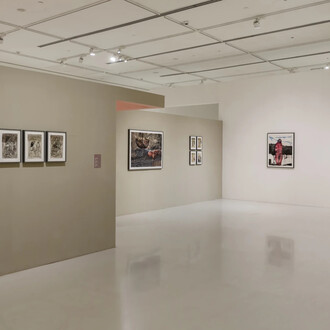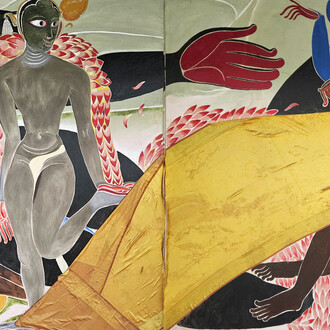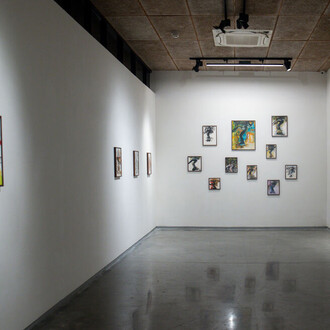The solo exhibition The geometry of ordinary lives presents Prasanta Sahu's decade-long inquiry into the intersection of art, research, and lived experience. This exhibition encapsulates the evolution of his interdisciplinary practice, characterised by a synthesis of diverse mediums and epistemologies to explore the subtleties of rural and suburban life through traditional knowledge, pre-industrial practices, and inherited wisdom.
At the core of his work is a critical engagement with generational knowledge and its transmission. He considers the workshops of blacksmiths, carpenters, potters, and craftsmen as dynamic repositories where techniques, philosophies, and stories are orally shared and safeguarded. Sahu’s work examines how these traditions persist despite the homogenization of economic and socio-political forces. His research-driven approach incorporates textual documentation, diagrammatic studies, object casting, interviews, and audio recordings of artisans engaged in generational occupations. The numerical, statistical, and diagrammatic elements in his work function as representational devices and indices of traditions, offering a methodological framework for understanding the fluidity of knowledge as it is practiced, adapted, and transferred.
Sahu's artistic vocabulary is shaped by his background in engineering and early engagements with survey mapping and technical drafting. The instruments of cartographic principles profoundly influence his visual lexicon, where spatial logic and geometric structuring serve as conceptual scaffolds to map the interconnectedness of craft, oral traditions, and embodied knowledge. Beyond this systematic approach, poetry plays a vital role in his practice, providing both a conceptual and affective framework. He often locates the inherent logic of certain acts as poetic, registering them within an abstract, almost metaphysical realm. The interplay of absence and presence, along with the non-linearity of narratives, aligns with poetic sensibilities, transforming his work into a site of cultural continuity where practice and memory intertwine.
Ultimately, The geometry of ordinary lives reimagines artistic practice as a means of epistemological preservation. By integrating cartographic logic, archival inquiry, and poetic sensibility, Sahu constructs a visual repository that interrogates the resilience of ancient wisdom amid rapid transformations. His work positions art as a space for critical reflection, where craft and ancestral knowledge challenge the monopolisation of selective philosophical discourse and resist cultural erasure.














